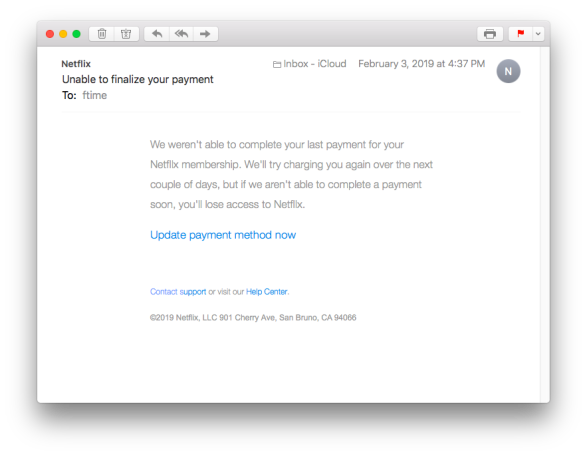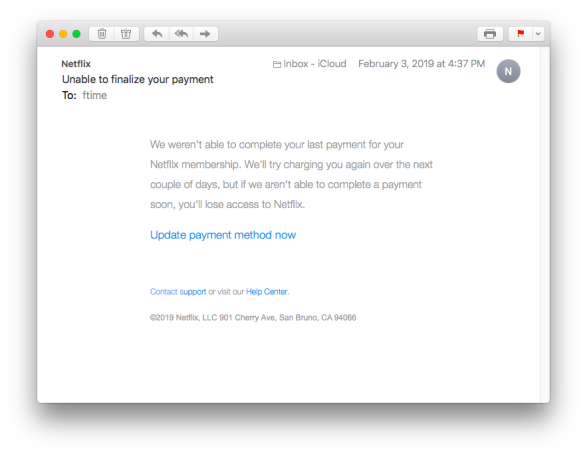
The classic Phishing attack relies on exploiting the weakest link in any personal or business’ security: the people.
Phishing employs social engineering tricks to dupe users into believing the email they received is legitimate. Those who fall for the phish feel they must follow its instructions or risk, ironically, having their data stolen. Use Malwarebytes for Mac, it is an anti-malware program. Contact The Mac Guy for help.
Below are examples of Phishing emails you may encounter. These are actual emails I received.
Here are three tips to ensure better security while online.
1. Browse and Shop with Caution
Malicious websites are out there, and it only takes one wrong turn to unknowingly download a malware and compromise your Mac.
Stick with the reputable sites like Amazon, eBay or Netflix. Always look for that ‘padlock’ symbol or the abbreviation ‘https’ in the address bar at the top of your browser.
This is especially important when purchasing items that are in your online cart or filling out any other financial or personal information.
2. Use Secure Passwords
Always be thinking about the passwords you’re using. Passwords for logging into any website should contain a mix of letters, numbers, and special characters, and keep in mind whether or not you’re sharing these passwords or using them for multiple apps and websites.
Ask yourself which is more of a pain: wrtiting down passwords, or recovering stolen personal information.
There are a few best practices around strong passwords, including the length being at least eight characters, and staying away from obvious information such as names and birthdays.
3. Trust Your Instinct: Don’t Click on Anything Suspicious
Most people have a decent scam radar—although, cyber threats are getting more sophisticated and real-looking by the day.
Usually if anything says Urgent or Change immediately, it's a Scam.
4. Apple doesn't email you for virus or malware alerts.
They also don't sell you products, at least not this way.







